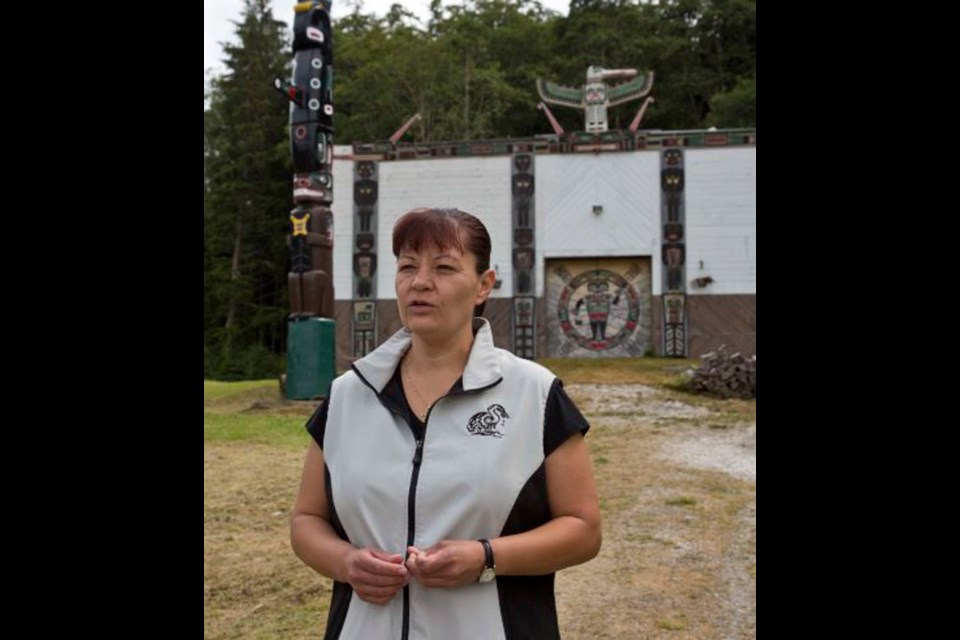 Laurie Carter, a magazine editor from Kelowna, was roaming around the province looking for travel articles to write when she first became aware of Emily Carr.
Laurie Carter, a magazine editor from Kelowna, was roaming around the province looking for travel articles to write when she first became aware of Emily Carr.
She was at the village of Skedans in Haida Gwaii. Later, an exhibit of Carr’s paintings in Vancouver left her in tears, and she came home with an armload of books by and about the artist. Carter found in Carr a kindred soul, and set forth on an adventure that has taken over her writing life.
Carr must have logged more than 20,000 kilometres travelling around this huge province. That was difficult for a single woman to do, and highly unusual. Her journeys took place at a time when the coast was undergoing profound changes, forced from its hunter-gatherer way of life dating back thousands of years to a colonial resource-extraction model that has proved to be unsustainable for even a few generations.
Carter’s goal was to consider the artist’s thoughts in situ, reflecting on the profound changes that have taken place there. Led by Carr’s writings and pictures, Carter also found information she needed in museums everywhere she went. Even at tiny Quatsino, on the north end of the Island, she was “overwhelmed with helpfulness,” she wrote.
“I really can’t say enough about the people who run these tiny outposts of history, caretaking our heritage with shamefully little support.”
Carter, author of Emily Carr’s sa���ʴ�ý, is an ideal travel companion, bringing to bear her extensive research and a willingness to be distracted by what comes her way. Tootling about in her little car named Happy Tot, Carter set up her tent in local campgrounds and enjoyed meals where the locals eat. She travelled aboard the MV Frances Barkley from Port Alberni to Ucluelet and the MV Uchuck III from Gold River to Yuquot, and she cruised the Broughton Archipelago with Mike Willie on his tour boat, the Sea Wolf.
At Friendly Cove she met Margarita James, a member of the Mowachaht/ Muchalaht nation and asked her about the accusation that Carr appropriated aboriginal culture. “On the contrary,” James shot back with some heat. “She got it.”
Carter met Joan Glendale at the village of T’sadzis’nukwaame’, which had appeared abandoned in Carr’s day. The bighouse that featured in her paintings had gone, but has been entirely rebuilt in the old way. Carter described this as “a triumph of traditional values.”
Naturally, the story began at Emily Carr House in Victoria. Curator Jan Ross is appropriately named first in Carter’s list of acknowledgments, and professional tour guide John Adams led her through our downtown. The forays Carr made into Saanich and the West Shore are made more vivid when Carter takes us to the exact sketching locations.
Her story about visiting the spot at the west end of Esquimalt Lagoon where, in 1934, Carr parked her caravan, the Elephant, somehow brings the artist out of the realm of legend and introduces us to her, a remarkable woman who used to live among us.
At Wickaninnish Beach, Carter met a Nuu-chah-nulth man with the unexpected name of Hjalmer Wenstob. While he carved at the Kwisitis Centre there, she was engaged by his storytelling. By coincidence, I had recently seen an exhibition of his work and that of his mentor, Art Thompson (now on show at the Legacy Gallery of the University of Victoria, under the title Emerging Through Fog: Tsa-Qwa-Supp and Tlehpik — Together by Tlehpik, Hjalmer Wenstob, until May 28).
In fact, a major theme of Carter’s book is the resurgence of First Nations culture. Beyond her fascination with totems and masks, she shares with us her admiration for the native people she meets, and their tenacity in rebuilding lives dismantled by the colonists who thought they knew better.
There is more than Carr to discover in this book. While in the neighbourhood of Campbell River, Carter stayed at the Roderick Haig-Brown home, now a combination of museum, shrine and bed-and-breakfast celebrating the life and work of this famous flyfisherman, ecologist and author. There, she had a chance to sit at his desk and sniff “like a wine connoisseur” his Heather Honey pipe tobacco.
In the manner of writers Dervla Murphy and Bill Bryson, Carter’s book is filled with gentle humour and mercifully free of footnotes. That said, Carr is quoted extensively, and the sources are named in the back of the book. There are a number of the author’s excellent photographs, but because of the punitive costs of reproduction rights, none of Carr’s paintings appear.
Carter is quick to acknowledge her reliance on the remarkable volume titled Unsettling Encounters, written by Gerta Moray, which itself provides all the Carr images necessary. Moray’s indispensable book on First Nations art in the work of Emily Carr was published by the UBC Press in 2006.
Carter is at the moment working on Book Two — travels with Emily in Northern sa���ʴ�ý and Haida Gwaii. The third volume — “and not to say the last,” Carter smiled — will follow in Carr’s footprints in Vancouver and the southern Interior. As she admitted, the artist has “completely taken over my life as a writer.”
We spoke about the themes of Carr’s life that are such an inspiration to us — her feminism, her ecology, her respect for the First Nations. And Carter, who is not an artist, mentioned that Carr inspires her to relentless creativity.
“She was a poster child — or a poster woman, really — for successful aging.” Carr was over 60 when she first took to camping in the Elephant, and even older when she became a writer. Carr never gave up, and she always stuck to her own vision.
“There is a message in this for us now,” Carter told me. “She didn’t care what people thought of how she looked. She was a very attractive young woman, but she went her own path. No matter what, peer pressure had no effect on her.”
This book, self-published by Carter’s own Little White Press, was one of three finalists for the American Association of Travel Journalists book of the year for 2015. Carter is a bit like the indomitable Emily Carr herself. The name of her previous book, Grandma Wears Hiking Boots, reflects this attitude.
Emily Carr’s sa���ʴ�ý: Book One, Vancouver Island, by Laurie Carter, Little White Publishing, Kelowna, 306 pages, $24.95.



